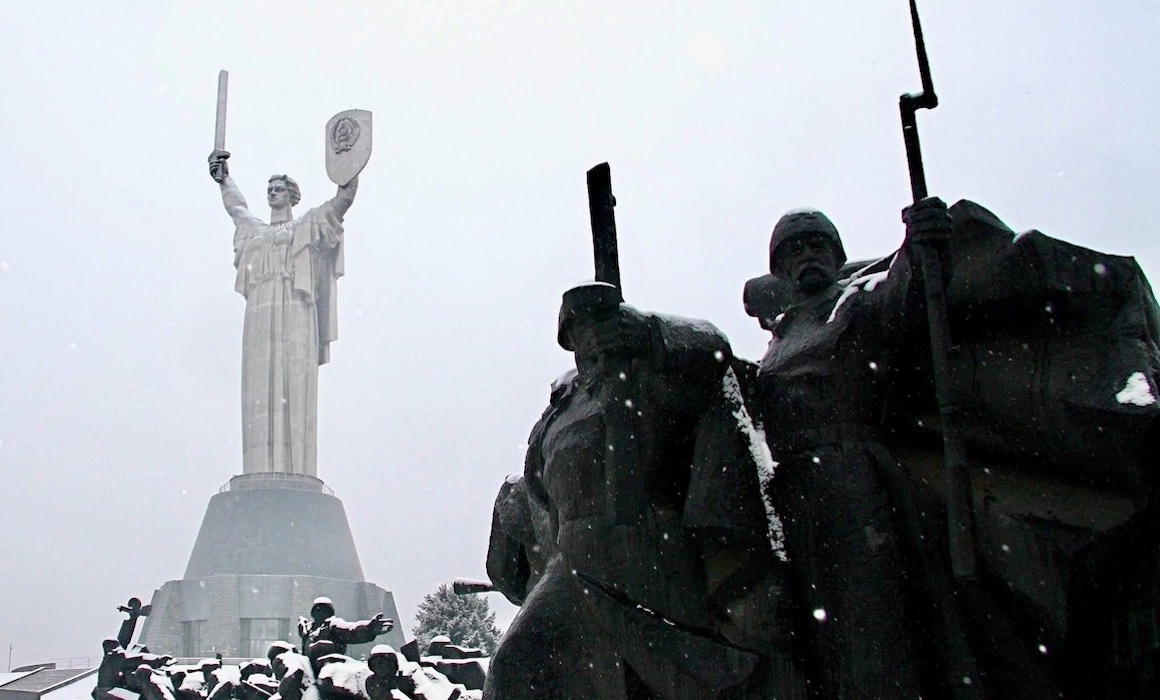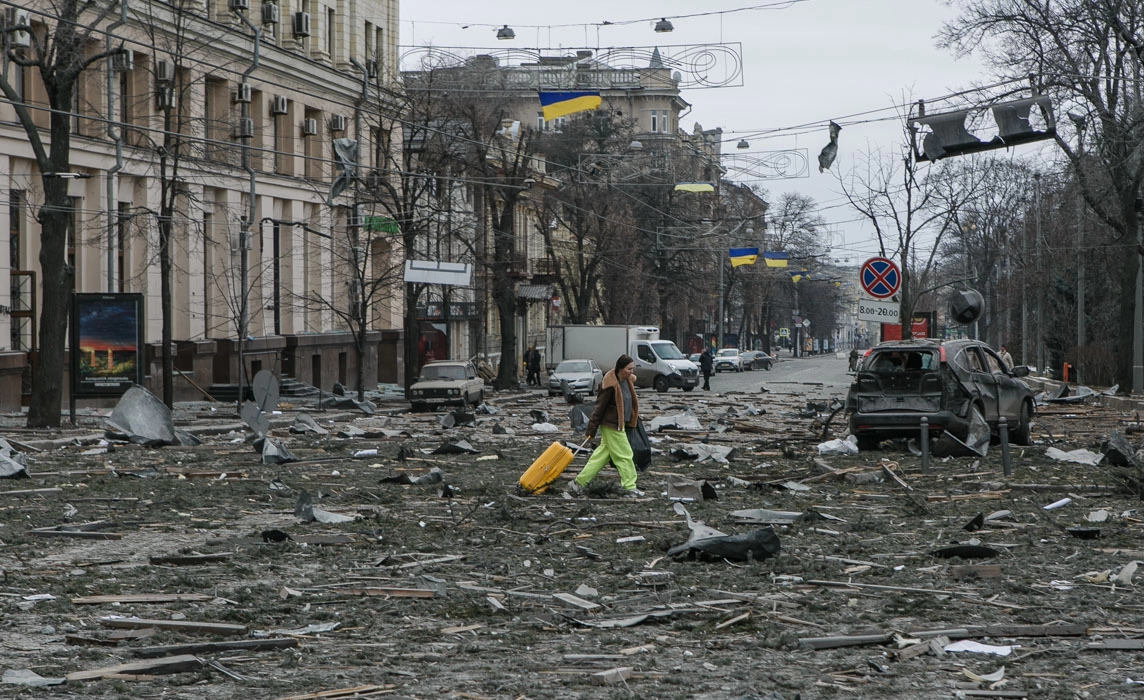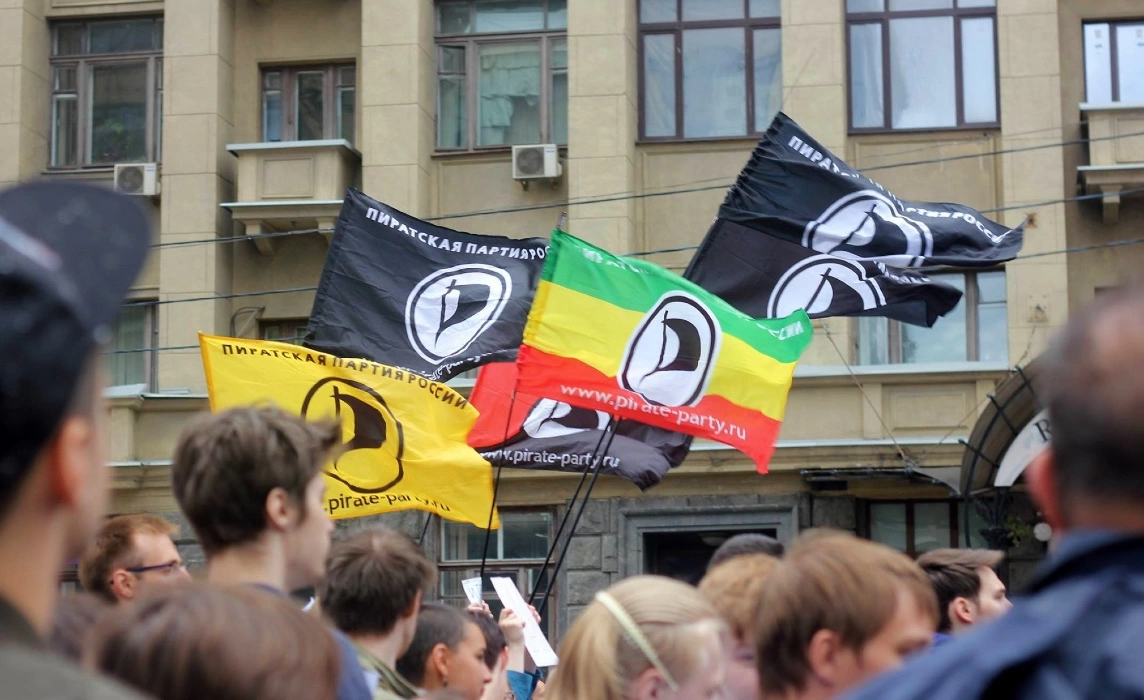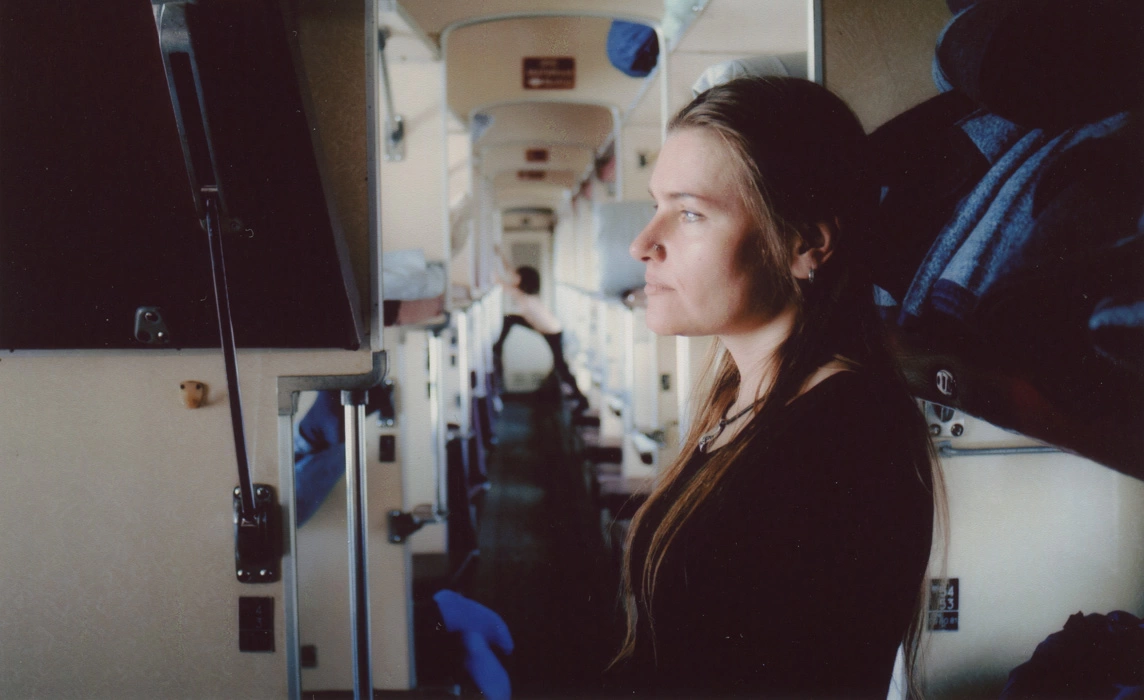Ukraine’s capital is a memorial not only to the sacrifice of the oppressed against greater odds, but also to willpower, dynamism and revival.
Kyiv has always been a flashpoint between clashing states, cultures and ideologies. After each tide of destruction, the residents barely have enough time to mourn their dead, before they hear another set of caterpillar tracks rolling down the banks of Dnieper. As soon as the city creates a new identity, a century ago as an industrial powerhouse, and today as a tech hub, the wrecking ball of history swings back to strike again, forgetting that in a place with such a deep past, roots are embedded, and will resurface. The architecture and monuments of this city are a reminder of this. Today, these memorials are in the target range of high-velocity missiles.
Personal sacrifice and its remembrance are seared into the fabric of the city. In the ninth century, the Kievan Rus became the first east Slavic state, with Kyiv as its capital, before it was sacked by the Mongols in the 13th century. Monasteries remain from the medieval era. Their sparkling domes and shadowy vaults hide networks of dark caves, crowded with pilgrims, lining up to kiss glass boxes, hosting relics of saints.
When the Soviet Union annexed much of today’s Ukraine, Vladimir Lenin understood these fiercely independent people needed autonomy, and granted republic status to the territory. But later, the nation became the site of the Communists’ most horrific genocide against its own people. One of the most heartbreaking memorials in Kyiv is a brass statue of a frail girl in braids, holding five ears of grain, commemorating the millions of Ukrainians and Cossacks, including 3.5 million children, who died of famine under Stalin in 1932-1933.
Eight years later Kyiv found itself as one of the buffer cities defending the USSR against a Nazi invasion. After a bloody battle, Hitler seized the city in 1941. In a ravine in the north of Kyiv is Baybn Yar, the site of mass graves of 10,000s of Jews, Soviet prisoners of war, and the Roma, who were victims of Nazi purges. In the first week of the war against Ukraine, the Russians showed scant respect for this war crime, by firing an airstrike at a TV tower, next to a monument commemorating this massacre, killing five.
The Battle of Kyiv hindered the German advance to the heart of the USSR, and when the Communists liberated the city in 1943, the Soviets granted Kyiv a “hero status”. This is celebrated in the Motherland Monument, a towering figure of a woman holding a sword and shield branded with the hammer and sickle, on the roof of a second world war museum, guarded by grim sculptures of men in battle. This shows how Kyiv was at the frontline, protecting the east against fascism. Today the city is in the same position, at the vanguard of a western defense against a different type of fascism, which may have a new face, but masks old beliefs.
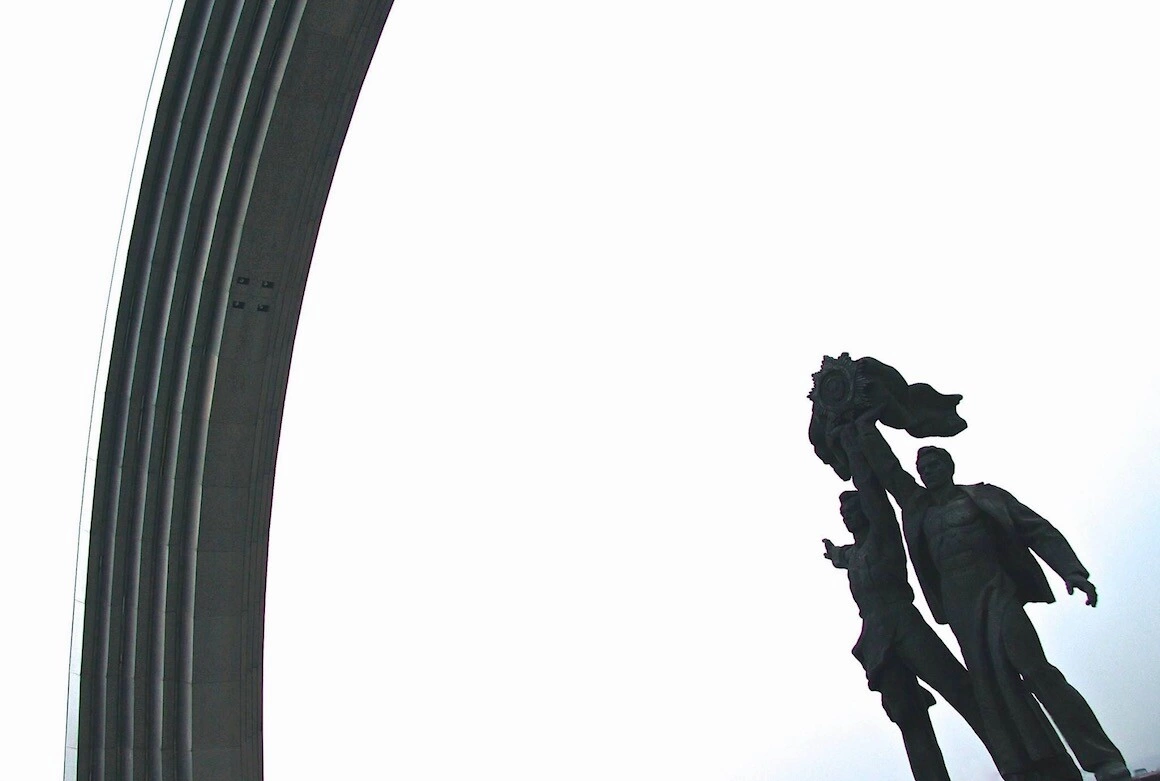
In modern culture, Kyiv is depicted as the city of bloody triumph over disaster, including in Max Brooks’ 2006 zombie apocalypse novel, World War Z. Near the end of the story, a tank commander flees a burning Kyiv, overrun by zombies, and contemplates what he sees: “So many symbols of our national defense and none more spectacular than the statue of the Rodina Mat (Motherland). She was the tallest building in the city, a more than sixty-meter masterpiece of pure stainless steel. She was the last thing I saw in Kiev, her shield and sword held high in everlasting triumph, her cold, bright eyes looking down at us as we ran.” In a cruel echo of this fiction, the Russian tanks and weapons that besiege the city use a symbol painted in white on their vehicles to identify themselves: the letter ‘Z’.
Once Kyiv had rebuilt itself as the third city of the USSR, a nuclear reactor exploded 90 km away, in Chernobyl, where 120,000 people were evacuated from the danger zone. Since 1986, 10,000 are estimated to have died from the fall-out. In the capital, a gloomy museum of remnants and testimonials remind visitors of the nuclear disaster and its aftermath, and stands as a monument to the hubris of leaders, and the folly of mankind.
As I write about a city that I love deeply, I sense pressure behind my eyes, a lull in my stomach, and a tightening under my brow. It seems silly to cry about the potential fall of buildings and statues, when so many lives are being lost, and I realize this is not just for the city, but for my friends who have fled from Kyiv, and my colleagues who are still there, showing bravery I can only admire.
The center of the city is itself a memorial to sacrifice. In 2013, the Ukrainian Government dumped an association agreement with the EU for closer ties with Russia, sparking demonstrations in Kyiv’s central independence square (Maidan Nezalezhnosti), which morphed into an occupation, and then a revolution. The riots showed that a mendacious and corrupt Government should never fuck with a city of three million angry people. This sparked Russia’s overt annexation in Crimea, and covert occupation of the eastern regions of Donetsk and Luhansk. Today Putin argues that Ukraine does not exist, and seeks to prove this point by wiping the country out. The fact that something imaginary can put up such a fight, and inspire global support, should make Putin reassess his hypothesis.
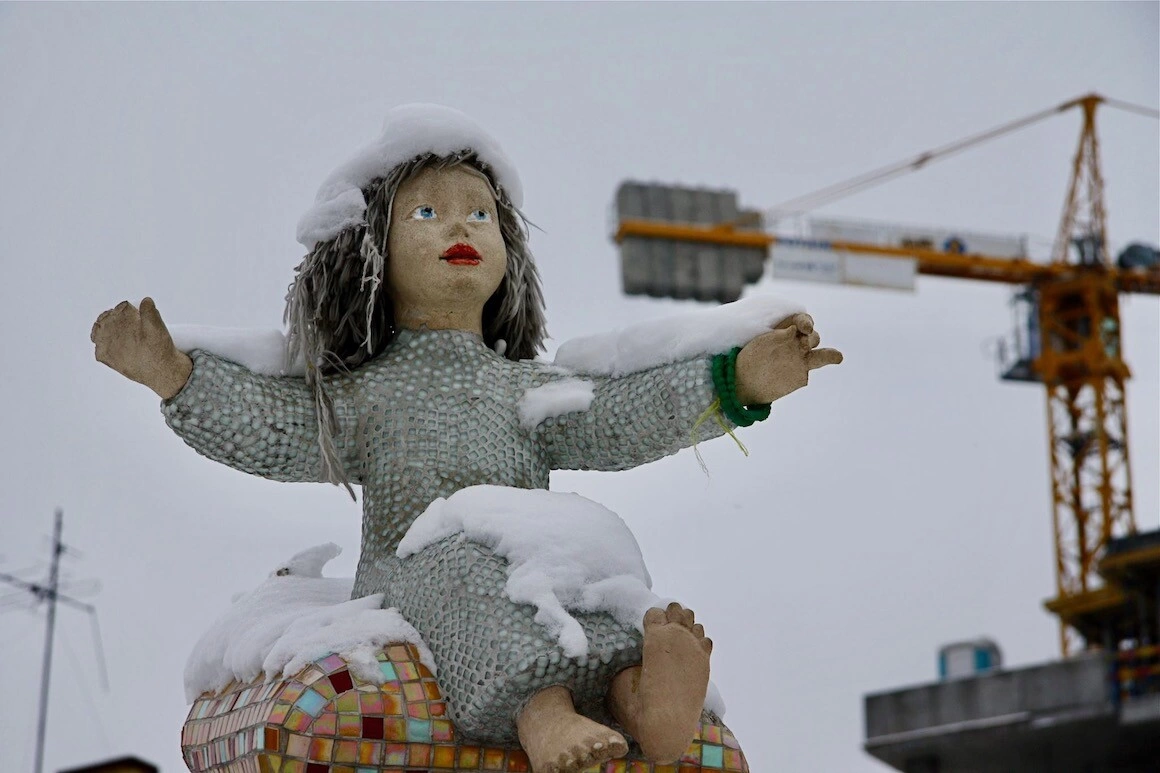
Kyiv remains a vibrant place. Buildings and sculptures match this. Take Hotel Salyut, a freestanding 1980s concrete block in the shape of a hand grenade, which has no stairs, but a winding path from the ground floor to the roof, like a helter-skelter, in one of the most playful examples of brutalism. Where the old town meets an overgrown park lies Landscape Alley, hosting sculptures such as a 30-meter hybrid of a blue cat and caterpillar, inspired by Alice in Wonderland. On the flat walls of blocks throughout the city are glorious murals by artists from around the world, celebrating Ukrainian culture, its tenacity and self-determination.
Kyiv is a constant reminder that the liberal west can never be complacent about the end of history, and that man’s capacity for evil can never be underestimated, but the city also shows that revival is possible, for ashes are fertile, and can bring forth something beautiful, vital and powerful. If Putin blows apart the monuments to tragedy that identify Kyiv, he misunderstands what they represent. This erasure will not work, because every force that has ever tried to wreck the Ukrainian capital has eventually perished, while the city persists.
Photos: Michael Bird
